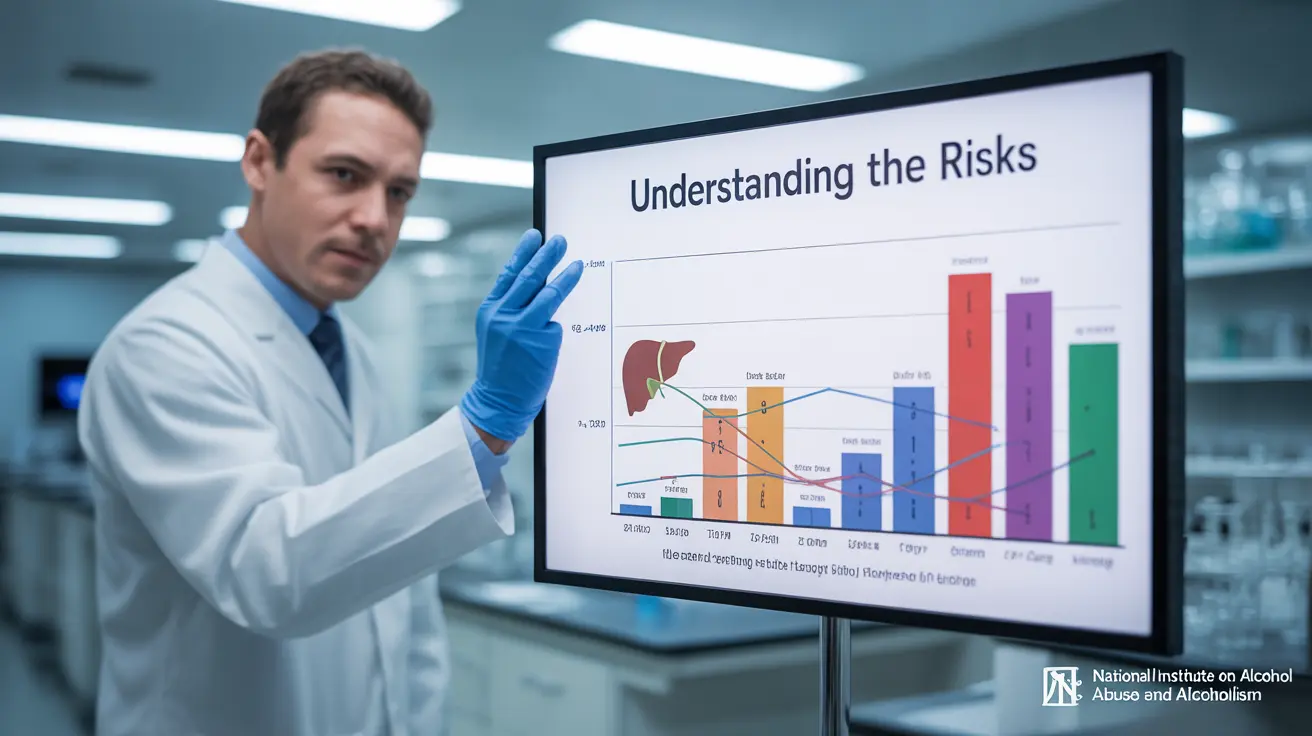Binge drinking is a dangerous pattern of alcohol consumption that can have serious health consequences, both immediate and long-term. While distinct from alcohol use disorder (AUD), binge drinking represents a significant public health concern affecting millions of Americans each year. Understanding what constitutes binge drinking and its potential risks is crucial for making informed decisions about alcohol consumption.
What Defines Binge Drinking?
According to the National Institute on Alcohol Abuse and Alcoholism (NIAAA), binge drinking occurs when blood alcohol concentration (BAC) reaches 0.08% or higher. For most adults, this typically means:
- For men: Consuming 5 or more drinks within 2 hours
- For women: Consuming 4 or more drinks within 2 hours
A standard drink in the United States is defined as:
- 12 ounces of regular beer (5% alcohol)
- 5 ounces of wine (12% alcohol)
- 1.5 ounces of distilled spirits (40% alcohol)
Binge Drinking vs. Alcohol Use Disorder
While binge drinking and alcohol use disorder share some overlapping characteristics, they are distinct patterns of alcohol misuse. Binge drinking typically involves periodic episodes of heavy drinking followed by periods of moderate or no alcohol consumption. In contrast, alcohol use disorder is characterized by a chronic pattern of problematic drinking that significantly impacts daily life.
Key Differences
The main distinctions between binge drinking and alcohol use disorder include:
- Frequency and pattern of drinking
- Physical dependence
- Impact on daily responsibilities
- Ability to control drinking behavior
- Presence of withdrawal symptoms
Health Risks of Binge Drinking
Binge drinking can lead to numerous immediate and long-term health complications, including:
- Alcohol poisoning
- Increased risk of accidents and injuries
- Impaired judgment leading to risky behaviors
- Cardiovascular problems
- Liver damage
- Memory and learning problems
- Increased risk of certain cancers
Short-term Risks
Immediate dangers of binge drinking include:
- Dangerous blood alcohol levels
- Heightened risk of falls and accidents
- Poor decision-making
- Potential for alcohol poisoning
- Risk of sexual assault or violence
Long-term Consequences
Regular binge drinking can lead to:
- Chronic health conditions
- Mental health issues
- Increased risk of developing alcohol use disorder
- Cognitive impairment
- Social and relationship problems
Treatment and Support Options
Several treatment and support options are available for individuals concerned about their drinking patterns:
- Professional counseling
- Support groups
- Behavioral therapy
- Medical supervision for those at risk
- Educational programs about alcohol use
Prevention Strategies
Effective strategies to prevent binge drinking include:
- Setting personal limits on alcohol consumption
- Planning alternative activities
- Building a supportive social network
- Understanding trigger situations
- Practicing stress management techniques
Frequently Asked Questions
What is binge drinking and how is it defined by health organizations? Binge drinking is defined as a pattern of drinking that brings blood alcohol concentration to 0.08% or higher, typically occurring when men consume 5 or more drinks or women consume 4 or more drinks within a 2-hour period.
What are the main differences between binge drinking and alcohol use disorder (alcoholism)? Binge drinking involves periodic episodes of heavy drinking, while alcohol use disorder is characterized by chronic dependence, inability to control drinking, and withdrawal symptoms when not drinking. Binge drinking may occur without the presence of physical dependence or withdrawal symptoms.
What health risks are associated with binge drinking compared to long-term alcoholism? Binge drinking primarily poses immediate risks such as alcohol poisoning, accidents, and risky behavior, while long-term alcoholism leads to chronic health conditions, organ damage, and severe physical dependence. Both can result in serious health consequences, but their manifestation differs in timing and nature.
How can someone tell if their drinking is binge drinking or a sign of alcohol use disorder? Key indicators include frequency of drinking, ability to stop once started, presence of withdrawal symptoms, and impact on daily responsibilities. Binge drinkers typically maintain control between episodes, while those with alcohol use disorder experience persistent cravings and inability to limit consumption.
What treatment options and support are available for people who binge drink or have alcohol use disorder? Treatment options range from professional counseling and support groups to behavioral therapy and medical supervision. The appropriate level of care depends on the severity of the drinking pattern and individual needs. Both conditions benefit from professional intervention and support networks.




